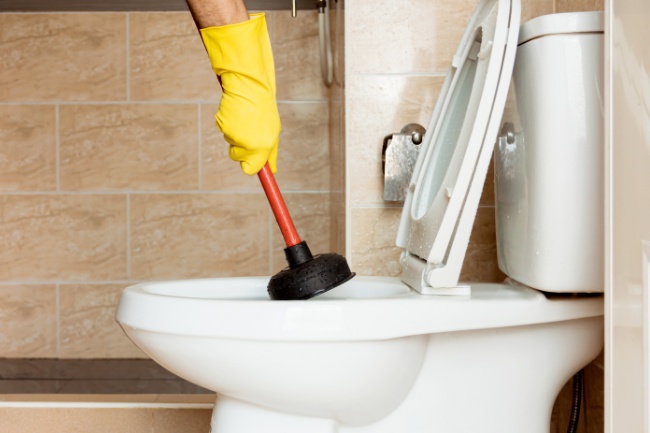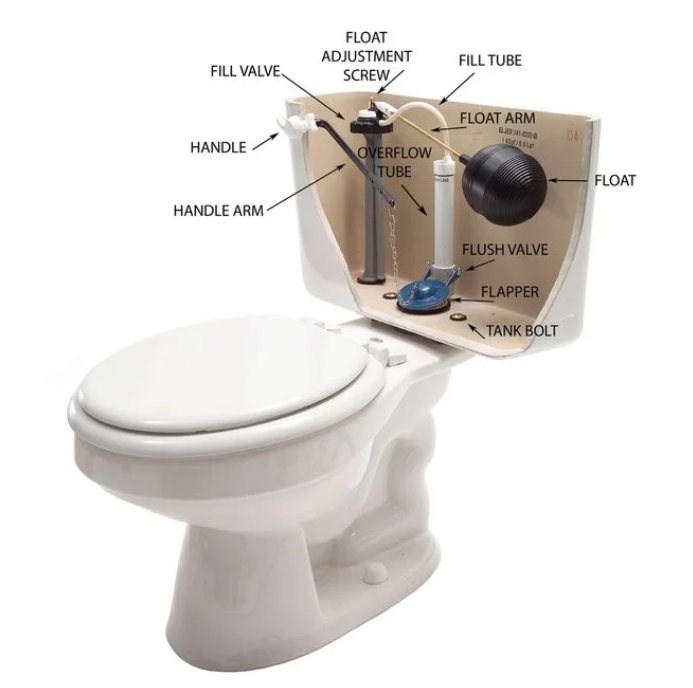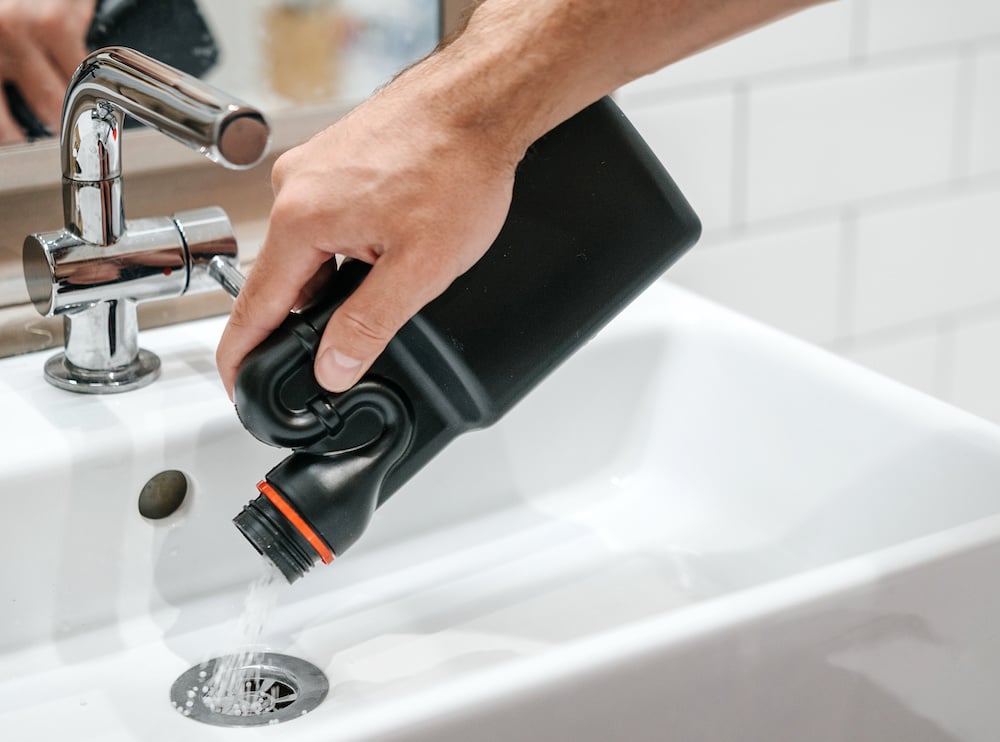6 Awesome Tips About Drain Repair From Unlikely Sources
Posted by William Heinselman on
 Before reaching out to plumbing professionals for professional drain damage inspections, there are some handy home remedies you can try; remedies that often clear clogs or grease concentrations within home drain pipes. These simple solutions can usually be completed with items you already have in your home! Here, we have outlined six ways homeowners have thought outside-the-box to resolve problems with their home drain pipes.
Before reaching out to plumbing professionals for professional drain damage inspections, there are some handy home remedies you can try; remedies that often clear clogs or grease concentrations within home drain pipes. These simple solutions can usually be completed with items you already have in your home! Here, we have outlined six ways homeowners have thought outside-the-box to resolve problems with their home drain pipes.
1.) Baking Soda Solutions
One of the more common home drain cleaning remedies, baking soda solutions are less damaging and probably cheaper than chemical drain cleaners. All you’ll need is regular baking soda and vinegar. Simply pour a cup of baking soda and one cup of warm vinegar down affected drains, and follow it after a few minutes with boiling water.
This home remedy is just as effective at removing clogs as chemical solutions, and much less chemically dangerous, or corrosive to your drain pipes.
2.) Everyday Plumbing Tools
You’d be surprised how effective everyday plumbing tools can be in eliminating drain clogs and performing repairs. Namely, conventional plungers, sink plungers and drain snakes. The plunger in your home right now can resolve sink and bathtub clogs, as well as toilet clogs.
Fill your clogged sink or bathtub a short way with water, and use your plunger the same way as you would with your toilet, pressing and pulling fluidly for about half a minute. Make sure to completely cover the drain with your plunger; you can also use petroleum jelly, coated on the brim of the plunger, to form a tighter seal around the drain. Move the plunger back and force consistently to build the pressure required to disrupt clogs.
Drain snakes, typically available at home improvements stores, can also be fed through drain pipes to dislodge clogged substances. Buying or renting a professional drain snake can be a cheaper alternative to hiring a plumbing specialist for your drain repair needs.
3.) Don’t Forget Overflow Vents!
What many homeowners forget to consider when cleaning clogs in their drains and repairing their pipes is their overflow vents. These are the open slits or holes near the brim of sink fixtures and bathtubs. These openings protect against water overflows, and funnel gratuitous water back into your plumbing system; because of this, they provide an additional air tunnel to your drain pipes, in addition to the actual drain entrance.
When unclogging a drain with a plunger, you will need to seal these overflow vents tightly to force maximum air pressure against a clog. A wet cloth usually will do the trick, and also catch any excess water trying to escape through the overflow vent. For side-by-side sinks, you may need to cover both vents (and the other sink’s drain) with a cloth, as they are likely connected to the same drain pipe. Remembering to cover these air vents is crucial for successful plunger solutions.
4.) Approach Clogs Like A Plumber
By this, we mean to approach clogged drains and damages from a professional plumber’s perspective; know how to navigate your pipe system, and properly dismantle or repair individual parts.
For example, many severe clogs can be remedied by removing your drain pipe’s plumbing trap. In most modern systems, this trap is known as a P-trap for its curved “P” shape. The curvature in these traps creates a water barrier between the air in your home and the unpleasant, even dangerous natural gases in municipal sewer lines. It is also in this curve, however, that grease and food debris can collect and form frustrating clogs. Plumbing traps are low-points in plumbing systems. Following the correct steps, however, removing and cleaning your plumbing traps can be a near effortless drain clog solution.
Simplified, these steps are:
- Shut off water to your drain and plumbing trap
- Use conventional tools to loosen nuts connecting the trap to the drain pipe; have a catching bucket in place for water and sludge spillage
- Use a wire brush to clear out grease and clogging agents
- Reattach the trap to your pipes, and test it by running water and watching for leaks
For a more in-depth explanation of plumbing trap cleaning, read our blog, “Understanding and Cleaning Plumbing Traps.” Plumbing professionals recommended that you regularly clean your plumbing traps, at least four times a year.
5.) A Sugary Solution: Soda Products
What may come as a shock to many homeowners is that drain clog solutions on par with chemical cleaners may be in their homes right now: sugary sodas, such as Coca-Cola and Pepsi, can virtually eliminate buildup in your drain pipes. In fact, cleaning your drains with soda is even safer than using chemical cleaners, which can cause skin burns upon contact and damage your drain pipes after extensive application.
The powerful dissolving agents in soda products, such as phosphoric acid, break down clog materials and grease with ease. This acid can even fight through some clogs and tough debris buildups that regular chemical cleaners cannot. Once poured through your drain pipes, flush the pipes with hot water to clear out the loose grease and food materials that cause your clog.
6.) Easy Prevention Tips
Prevention of drain damage and clogging is actually quite simple, if you understand what can and cannot be processed through drain pipes and your kitchen sink fixtures. A simple drain filter, which catches loose debris before it can flow down drains, will essentially prevent all large material buildup in your pipes, and can be found at your local home improvement store, if not department stores.
Knowing what kitchen garbage disposals can’t handle will also help you prevent many frustrating clogs from forming. Most garbage disposals are meant to handle easily processed food waste, yet many homeowners treat their disposals like a trash bin, resulting in the need for extensive drain repair.
Just as shower drains have trouble with hair clumps, kitchen garbage disposals cannot effectively process:
- Potato and banana peels, or other food skins
- Expandable rice or pasta
- Celery, corn husks and other fibrous food products
- Plastics, such as wrappers or containers
- Animal bones and cartilage
- Paper products, such as paper towels and napkins
- Bleach, and other harmful chemicals
- Food and kitchen grease, or oil
By following these tips, you can significantly improve your drain cleaning, clog-dissolving efforts. To learn more about effective drain pipe maintenance, or what other tools plumbing specialists use to resolve home plumbing issues, contact the experts at Express Sewer & Drain today!

Topics: Commercial Plumbing, Home Plumbing, Drain Cleaning and Repair






